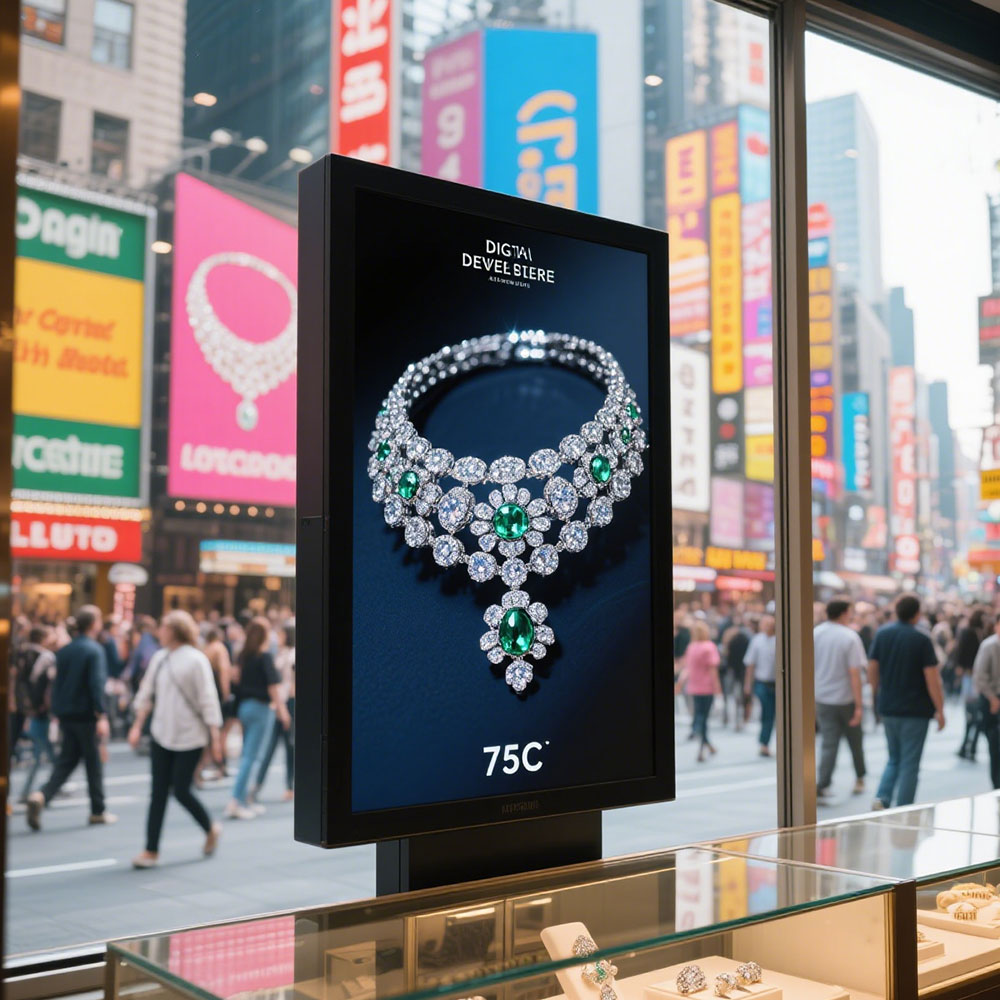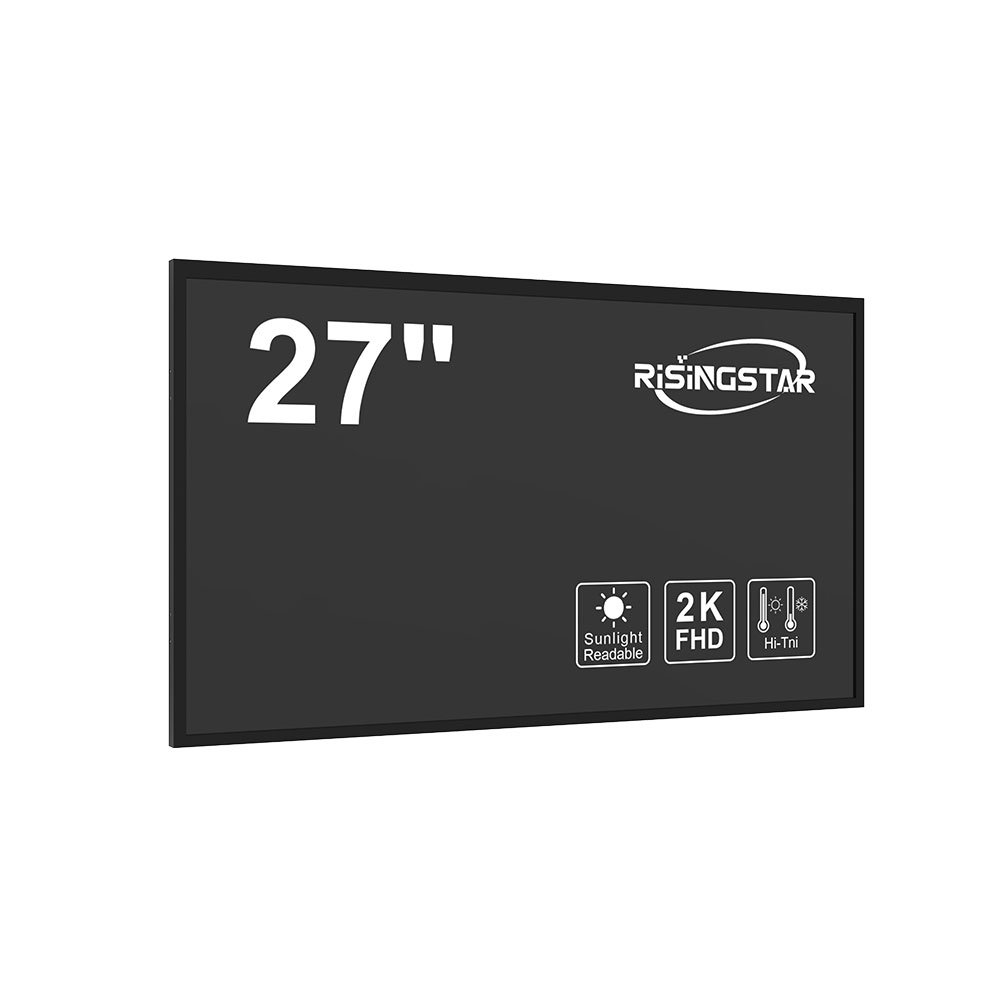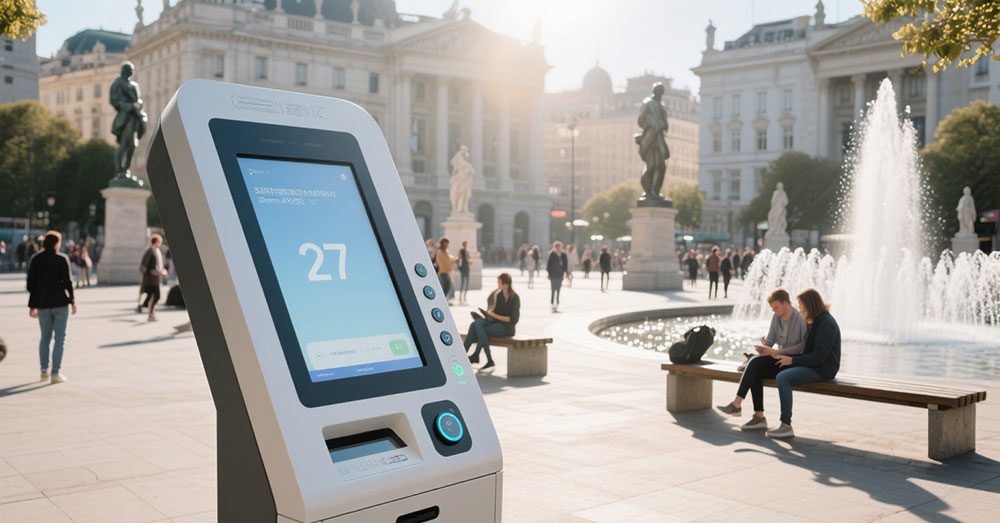When deploying digital signage in outdoor environments, selecting the right LCD screen is critical—not only for clear visibility under varying lighting conditions but also for long-term durability against weather, temperature fluctuations, and physical stress. According to the International Electrotechnical Commission (IEC) standard IEC 60068-2, outdoor displays must withstand environmental stresses like humidity, dust, and thermal shock. A well-engineered outdoor LCD screen should meet or exceed these benchmarks to ensure operational reliability over years of use.
Brightness and Contrast for Daylight Readability
One of the most crucial specifications is brightness—measured in nits. For outdoor applications, screens typically require a minimum of 5,000 nits to remain legible under direct sunlight. In high-glare environments such as airports or stadiums, 7,000–10,000 nits are recommended. This is significantly higher than indoor LCDs, which usually operate at 300–500 nits. Additionally, contrast ratio matters; a high contrast ratio (e.g., 4000:1 or more) enhances image clarity and color accuracy, even when ambient light changes dramatically throughout the day.
Environmental Protection Ratings

Look for IP65 or higher protection ratings (as defined by IEC 60529). An IP65 rating means the unit is fully dust-tight and protected against water jets from any direction—ideal for rain, snow, or coastal salt exposure. For extreme climates, consider IP68 for full submersion capability. Many commercial-grade outdoor LCDs now feature passive cooling systems instead of fans to prevent dust ingress and reduce maintenance needs—a design choice supported by real-world case studies from companies like LG Electronics and Samsung Display.
Thermal Management and Operating Temperature Range

Outdoor screens often face temperatures from -20°C to +60°C. High-quality units integrate intelligent thermal management systems, including heat sinks, thermally conductive materials, and automatic brightness adjustment based on ambient temperature. These features help prevent overheating during summer sun exposure and ensure stable performance in freezing winter conditions. The U.S. Department of Energy’s guidelines for outdoor display efficiency emphasize that proper thermal design can extend screen lifespan by up to 40%.
Durability and Mounting Solutions

The frame material—typically aluminum or stainless steel—is another key factor. Aluminum offers excellent strength-to-weight ratio and corrosion resistance, making it ideal for wall-mounted or pole installations. Some manufacturers now offer vandal-resistant enclosures with tempered glass and anti-theft mounting brackets, particularly useful in urban public spaces or transit hubs.
Smart Features for Remote Management
Modern outdoor LCDs increasingly include built-in IoT capabilities, such as remote diagnostics, firmware updates, and energy-saving modes. These features reduce downtime and lower total cost of ownership. For example, Philips’ Digital Signage solutions allow centralized control via cloud-based platforms, enabling operators to adjust brightness, schedule content, and receive alerts for hardware failures—all without manual intervention.
In summary, choosing an outdoor LCD screen isn’t just about buying a large screen—it’s about integrating engineering excellence, environmental resilience, and smart technology. By focusing on brightness, IP ratings, thermal stability, and remote manageability, businesses can deploy reliable digital signage that performs consistently year-round, whether in Dubai’s desert heat or Oslo’s winter chill.







